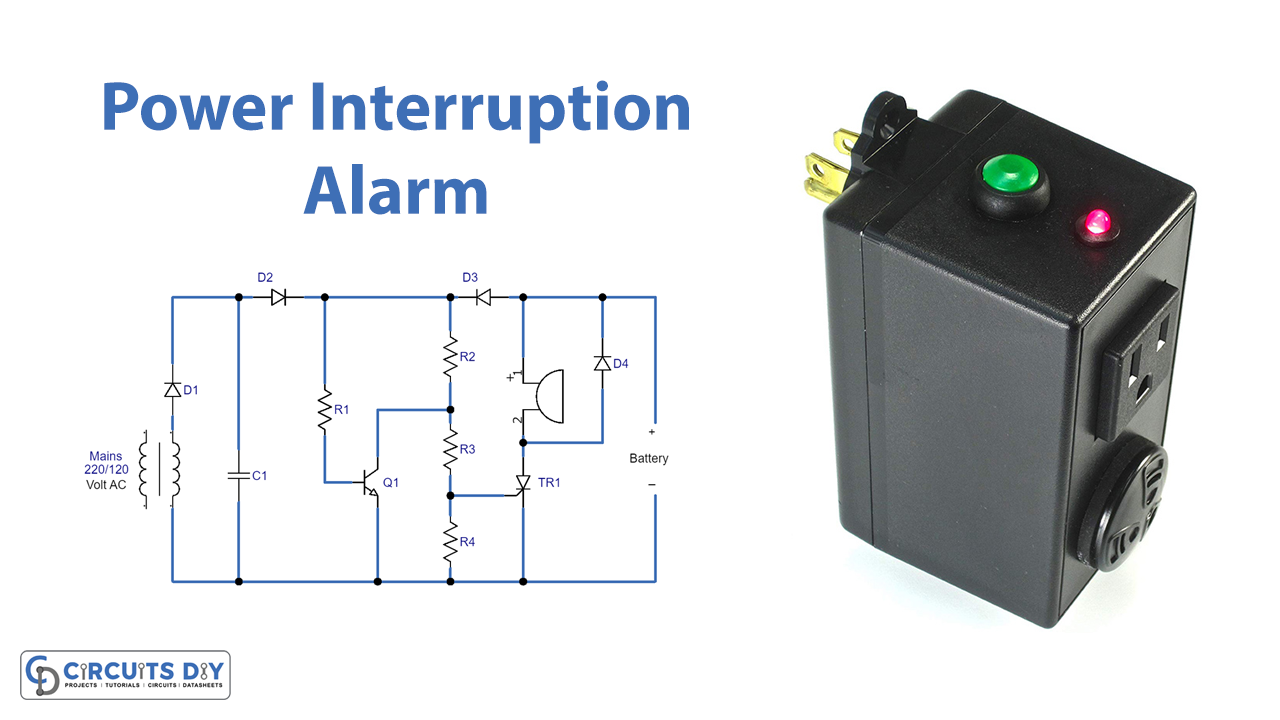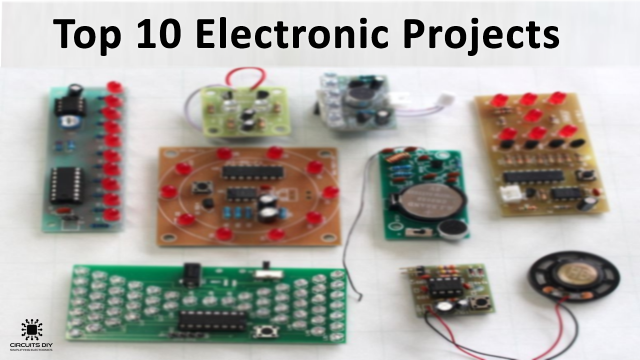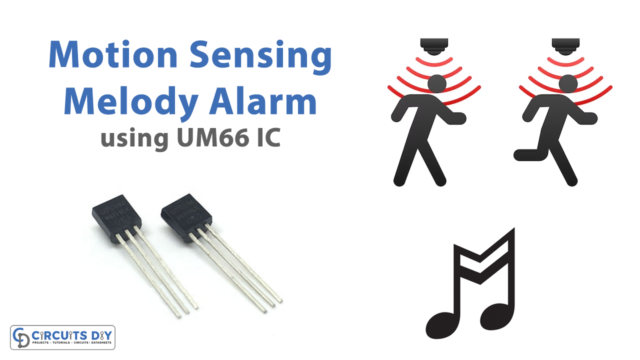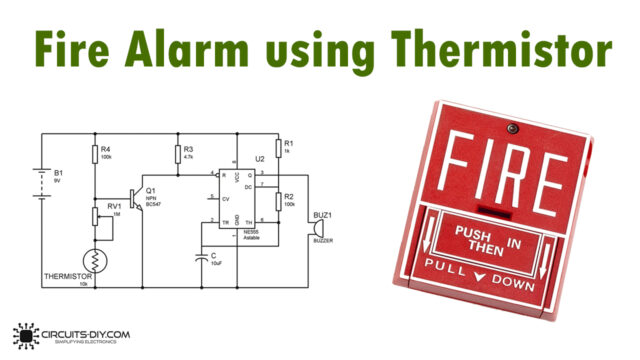Introduction
Don’t let power outages catch you by surprise again! This easy-to-make Power Interruption Alarm Circuit will keep you informed. Whether it’s for emergency preparedness, avoiding food spoilage, or ensuring your devices don’t shut down unexpectedly, this circuit has got you covered. And the best part? You can build it yourself with just a few basic components. So roll up your sleeves, get your soldering iron ready, and let’s bring your power interruption alarm to life!
Hardware Required
You will require the following hardware for Power Interruption Alarm Circuit.
| S.no | Components | Value | QTY |
|---|---|---|---|
| 1 | Mains | 220/120 Volt A/C | 1 |
| 2 | Polar Capacitor | 470 uF/25V | 1 |
| 3 | thyristor | TR1 C106Y1 (NTE5452) | 1 |
| 4 | Resistor | R1 = 12K, R2 = 2.7K R3 = R4 = 1K | 4 |
| 5 | Diode | D1 = D2 = D3 = D4 = 1N4007 | 4 |
| 6 | Battery | 9V | 1 |
| 7 | Transistor | BC547 | 1 |
| 8 | Buzzer | 9V 6V | 1 |
Circuit Diagram

Working Explanation
The circuit is connected to the power mains through the transformer T1, which boosts the AC voltage. The voltage is rectified by diode D1 and then filtered by capacitor C1.
The circuit operates by using a transistor Q1 and a thyristor (TR1). When the mains voltage is present, the transistor Q1 functions to maintain a small voltage at the gate of the thyristor, which prevents it from getting activated and sounding the alarm. The thyristor is connected to a 9-volt battery, so in the event of a power failure, the voltage from the transformer disappears, and the transistor Q1 is turned off. This allows the battery to forward bias diode D3, and the voltage at the gate of the thyristor increases, triggering it and sounding the alarm through the connected buzzer.
If the power returns, the error message will not stop because the thyristor will remain latched in its activated state, even though its gate is now at zero voltage. To turn off the alarm and reset the circuit, it is necessary to temporarily turn off the battery supply through a switch (don’t panic, we haven’t shown this in our circuit diagram) that can be connected in series with the battery or the thyristor. A relay for a visual warning can also replace the buzzer.
Final Words
Making a power interruption alarm circuit is a great way to keep track of power outages in your home or office. By following the instructions and using a few basic components, you can easily build a reliable power interruption alarm that will keep you informed and prepared for any power interruption. Happy building!













